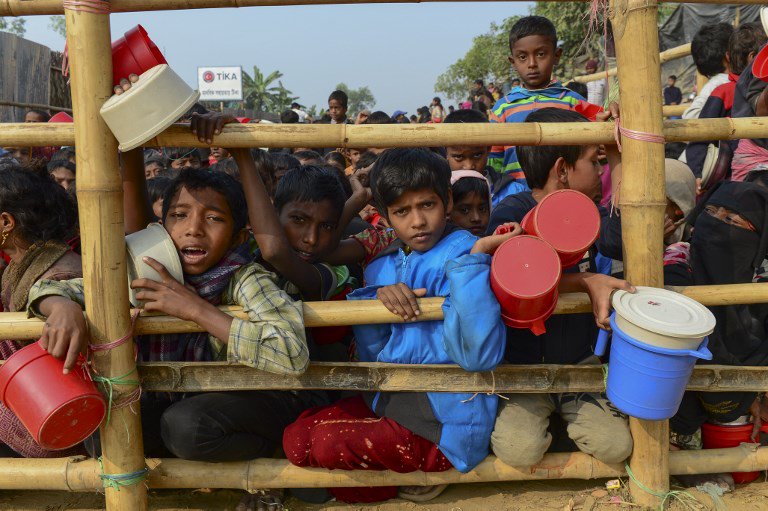Two days after denying an AP report that Myanmar soldiers massacred the Rohingya residents of Gu Dar Pyin village in northern Rakhine State and buried their bodies in at least five mass graves, the Myanmar government is pointing to an essay by New York Times reporter Hannah Beech as evidence that the words of Rohingya refugees cannot be trusted.
Beech’s Feb. 1 essay is titled “The Rohingya Suffer Real Horrors. So Why Are Some of Their Stories Untrue?” It describes some Rohingya refugees fabricating stories about their suffering to gain the attention of aid groups.
She writes: “In any refugee camp, tragedy is commodified. Aid groups want to help the neediest cases, and people quickly realize that the story of four orphaned sisters holds more value than that of an intact family that merely lost all its possessions.”
Beech recognizes this false storytelling as a “natural survival tactic,” but she is concerned that “false narratives devalue the genuine horrors — murder, rape and mass burnings of villages — that have been inflicted upon the Rohingya by Myanmar’s security forces.”
At once ignoring the point of Beech’s essay and proving it, the people at the state-run Global New Light of Myanmar are using it to discredit the testimonies of refugees that led AP to report on Feb. 1 that Myanmar troops massacred between 75 and 400 villagers in Gu Dar Pyin before burying them in mass graves and dousing their bodies in acid.
The AP report cites testimonies of survivors who said the attack on Aug. 27 was planned by security forces and that it ended with troops looting Rohingya possessions and with Buddhist residents cutting the throats of survivors and throwing children and elderly people into the flames of the burning village when the initial attack was over.
“Journalist Hannah Beech also wrote an article about untrue stories that appeared about the displaced people of Myanmar from the border areas of Bangladesh. Hannah Beech said she had seen the displaced people quoted in foreign news media telling stories that she knew were not true,” writes an unnamed contributor to the daily’s Opinion section.
The article goes on to reiterate the official position of the Myanmar government, which is that the killing in Gu Dar Pyin was committed in self-defense when “security forces were attacked by a combined group of Arakan Rohingya Salvation Army (ARSA) terrorists and some 500 villagers on 28 August, 2017.”
“Those who died in the conflict were not civilians but armed men who attacked the security forces. In any country, security forces have the right to defend themselves and protect the sovereignty of the country; and they certainly have the duty to enforce the rule of law in their country,” writes the author. “Is the accusation made by AP professional?”
Beech’s essay has received some public criticism, most notably by activist and scholar Maung Zarni, who has written that her attempt to highlight the need for journalistic skepticism only points out the obvious and comes at too great a cost to the Rohingya victims of the Myanmar military.
Furthermore, Zarni writes, in addition to fueling the Myanmar government’s campaign to discredit the Rohingya, the essay unnecessarily fuels anti-Rohingya hatred by mentioning a Rohingya man with six wives and 42 children and also harmfully describes the Rohingya as having lives in western Myanmar “for generations” rather than pointing out that they were once recognized as citizens of Myanmar and then stripped of their citizenship by the country’s military rulers.
If this episode proves anything, it is that we still haven’t figured out how to deal with a situation in which many sides of an argument are true at the same time, especially when others are false.




